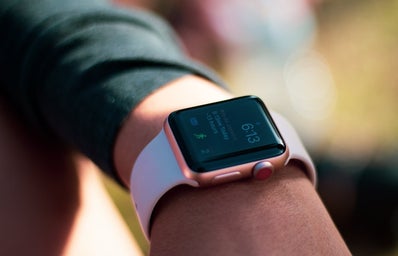As the purchasing of smart tech items becomes more of a fashion trend, there seems to be a growing relationship between those who follow fashion trends and those who follow technological ones. Developers definitely look into the aesthetic of tech items, making sure that they are branded stylish and in turn, consumers opt for the more visually pleasing tech gears that can be labelled fashionable. For example, there always seems to be an element of modern chicness that comes with owning items such as smart watches and wireless earphones over the more traditional versions.
The way in which technology may be used in combination with fashion is endless. Technology may be used as a method of developing efficiency in the industry itself, as well as promote a business that is environmentally aware. Of course, this list does not fall short to actual wearable tech ensembles.
In terms of fashion and the environment, brands are becoming more aware of the potential of using technology to make fashion more sustainable and less hazardous for the environment. To reform the way the fashion industry works methodologically, collaborations such as one between Google Cloud and Stella McCartney have created tools that aid brands in estimating the environmental impact of their production process via data analytics and machine learning. In a highly competitive global market like fashion, this will definitely help brands understand their own supply chain and be more aware of environmental repercussions.
Furthermore, the use of blockchain technology has helped fast fashion brands in particular, to combat their issues of unsold inventory waste. Not only does this reduce waste, but it also makes fashion more efficient by transforming the industry from a supply chain to a demand chain. As consumers, we can benefit from lower prices due to the increased control brands will have over their demand supplied stock.
Not only do we see changes in the way the industry works, but wearable tech is also being developed – and this is not just limited to smartphone accessories. For example, Google’s ‘Jacquard’ project encompasses weaving technology that can turn any clothing piece into gesture-controlled surfaces, which may then be connected to your smartphone. Wearable X has already created yoga wear integrated with sensors to allow for exercise feedback, pulse checks and audio instructions that are all connected to a smartphone app. It seems that both the tech and fashion industries have acknowledged the possibilities that come with digitalizing otherwise regular items, in enhancing the consumer’s experience by making it a more in-demand and specific one, which ultimately makes life easier for us.
Within Japan, we have the Tokyo Fashion Technology Lab in Harajuku – a fashion school that specifically fosters ingenuity when it comes to the fashion-tech hybrid. This is a clear example of the potential that even the fashion industry sees in the amalgamation of garments and technology. Courses on fashion technology have also been on the rise around the world, as designers, developers and students have become more appreciative of how technological developments can bring fashion to the cutting edge of this digital age.
From logistical and environmental improvements to smarter clothing and accessories, there is no denying that the lines between the worlds of fashion and technology have blurred. If we’ve already become normalized to smart accessories and developments such as tech-enabled clothing, it seems that the marriage of fashion and technology is indeed inevitable. It seems that brands are realizing the benefits of using high tech systems and smart fabrics. Imagine a future where sensor guided materials were implemented in our everyday clothes and we could change the music we were listening to with a little stroke of a finger across our jackets. Smart fashion no longer feels like a what-if situation but rather a when situation for us as consumers, and the exciting wait to wearing smart clothes doesn’t seem too long.


